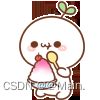C语言字符、字符串函数(超详细版)
目录
1.计数器:
2.指针 - 指针
3.函数递归
strlen函数
计算字符串长度;
size_t strlen ( const char * str );
参数指向的字符串必须要以 '\0' 结束;
字符串以'\0' 作为结束标志,strlen函数返回的是在字符串中 '\0' 前面出现的字符个数(不包含 '\0' );
注意函数的返回值为size_t,是无符号的( 易错 );
三种方法模拟实现:
1.计数器:
#include
#include
#include
size_t my_strlen(const char* pc)
{
assert(pc);
size_t count = 0;
while (*pc != '\0')
{
count++;
pc++;
}
return count;
}
int main()
{
char arr[] = { "abcdef" };
size_t ret = my_strlen(arr);
printf("%zd\n", ret);
return 0;
} 2.指针 - 指针
#include
#include
#include
size_t my_strlen(char* pc)
{
char* ptr = pc;
assert(pc && ptr);
//让ptr指向字符串末尾
while (*ptr != '\0')
{
ptr++;
}
return ptr - pc;
}
int main()
{
char arr[] = { "abcdef" };
size_t ret = my_strlen(arr);
printf("%zd\n", ret);
return 0;
}
3.函数递归
#include
#include
#include
size_t my_strlen(const char* pc)
{
assert(pc);
if (*pc != '\0')
{
return 1 + my_strlen(pc + 1);
}
else
{
return 0;
}
}
int main()
{
char arr[] = { "abcdef" };
size_t ret = my_strlen(arr);
printf("%zd\n", ret);
return 0;
} strcpy函数
字符串拷贝;
char* strcpy(char* destination, const char* source );
源字符串必须以 '\0' 结束;
会将源字符串中的 '\0' 拷贝到目标空间;
目标空间必须足够大,以确保能存放源字符串;
目标空间必须可变;
如果原字符串的地址赋值给指针,其作为常量字符串时就不可被修改,只有改成数组存放它才能将其改掉;
使用实例:
#include
#include
int main()
{
char source[7] = {"abcdef\0"};
char destination[10] = {"xxxxxxxxxx"};
strcpy(destination, source);
printf("%s\n", destination);
return 0;
} 模拟实现
#include
#include
#include
char* my_strcpy(char* destiniation, char* source)
{
assert(source && destiniation);
char* start = destiniation;
while (*destiniation && *source)
{
*destiniation = *source;
destiniation++;
source++;
}
//最后要将'\0'也放进去
*destiniation = *source;
return start;
}
int main()
{
char source[] = { "hello" };
char destination[10] = { "xxxxxxxxx"};
my_strcpy(destination, source);
printf("%s\n", destination);
return 0;
} 优化模拟写法:
#include
#include
#include
char* my_strcpy(char* destiniation, char* source)//完成了赋值、移位、判断
{
assert(source && destiniation);
char* start = destiniation;
while (*destiniation++ = *source++)
{
;
}
return start;
}
int main()
{
char source[] = { "hello" };
char destination[10] = { "xxxxxxxxx"};
my_strcpy(destination, source);
printf("%s\n", destination);
return 0;
} strncpy函数
- 指定长度拷贝;
- char * strncpy ( char * destination, const char * source, size_t num );
使用实例:
#include
#include
int main()
{
char arr1[] = { "hello" };
char arr2[20] = { "world and you" };
strncpy(arr2, arr1, 2);
printf("%s\n", arr2);
return 0;
} strcat函数
字符串追加;
char* strcat(char* destination, const char* source );
源字符串必须以 '\0' 结束;
目标空间必须有足够的大,能容纳下源字符串的内容;
目标空间必须可修改;
字符串自己给自己追加,如何?——> 不能给自己追加,\0被自己覆盖了,会死循环;
使用实例:
#include
#include
int main()
{
char source[] = { " world" };
char destination[20] = { "hello" };
strcat(destination, source);
printf("%s\n", destination);
return 0;
} 模拟实现:
#include
#include
#include
char* my_strcat(char* destination, const char* source)
{
assert(destination && source);
char* start = destination;
//让destination指向末尾
while (*destination)
{
destination++;
}
//拷贝字符串
while (*destination++ = *source++)
{
;
}
return start;
}
int main()
{
char source[] = { " world" };
char destination[20] = { "hello" };
my_strcat(destination, source);
printf("%s\n", destination);
return 0;
} strncat函数
- 指定长度追加;
- char * strncat ( char * destination, const char * source, size_t num );
- 会对原字符串追加结束后,在末尾添加 '\0' ;
使用实例:
#include
#include
int main()
{
char arr1[] = { "worldandyou" };
char arr2[20] = { "hello \0xxxxxxx" };
strncat(arr2, arr1, 5);
printf("%s\n", arr2);
return 0;
} strcmp函数
int strcmp ( const char * str1, const char * str2 );
字符串比较函数;
第一个字符串大于第二个字符串,则返回大于0的数字;
第一个字符串等于第二个字符串,则返回0;
第一个字符串小于第二个字符串,则返回小于0的数字;
比较的是每一对字节的ASCII值,而不是字符串长度,如果是汉字就是GBK;
使用实例:
#include
#include
#include
int main()
{
char arr1[] = { "hello" };
char arr2[] = { "hallo" };
printf("%d\n", strcmp(arr1, arr2));
return 0;
} 一定注意不能这样写:这样只是在比较两个地址
模拟实现:
#include
#include
#include
int my_strcmp(const char* pc1, const char* pc2)
{
assert(pc1 && pc2);
while (*pc1 == *pc2)
{
if (*pc1 == '\0' || *pc2 == '\0')
{
return 0;
}
pc1++;
pc2++;
}
return *pc1 - *pc2;
}
int main()
{
char arr1[] = { "hallo" };
char arr2[] = { "hello" };
int ret = my_strcmp(arr1, arr2);
printf("%d\n", ret);
return 0;
} strncmp函数
- 指定长度比较;
- int strncmp ( const char * str1, const char * str2, size_t num );
使用实例:
#include
#include
int main()
{
char arr1[] = { "hello world" };
char arr2[20] = { "hello" };
int ret = strncmp(arr1, arr2, 5);
if (ret > 0)
{
printf("arr1 > arr2\n");
}
else if(ret < 0)
{
printf("arr1 < arr2\n");
}
else
{
printf("arr1 = arr2");
}
return 0;
}
strstr函数
- char * strstr ( const char *str1, const char * str2);
- 查找子串的函数
- 找到返回子串第一个字符在原串里的地址
- 找不到返回空指针NULL
使用实例:
#include
#include
int main()
{
char arr1[] = { "hello world" };
char arr2[] = { "wor" };
char* ret = strstr(arr1, arr2);
if (ret == NULL)
{
printf("子串不存在\n");
}
else
{
printf("%s\n", ret);
}
return 0;
} 模拟实现:
要考虑两种情况:
- 子串在原字符串中直接出现:比如要在"abcdef" 中找到子串"def",直接遍历一次就可以找到;
- 子串在原字符串中伪出现:比如要在"abcdeabdededef" 中找子串"def",前面出现的"de"会导致一次查找不完全;就需要借助标记指针;
#include
#include
#include
char* my_strstr(const char* str1, const char* str2)
{
assert(str1 && str2);
const char* s1 = str1;
const char* s2 = str2;
const char* p = str1;
while (*p)
{
s1 = p;//设置str1的起始位置,将标志起点给到str1
s2 = str2;//str2每次回到开头
while (*s1 != 0 && *s2 != 0 && *s1 == *s2)
{
s1++;
s2++;
}
//找到了,因为str2已经到了末尾
if (*s2 == 0)
{
return (char*)p;
}
p++;
//每查找一轮,如果发现不完全相同,p就向后走一步,更改标志起点
}
return NULL;
}
int main()
{
char arr1[] = { "hello wowowowowoworld" };
char arr2[] = { "wor" };
char* ret = my_strstr(arr1, arr2);
if (ret == NULL)
{
printf("子串不存在\n");
}
else
{
printf("%s\n", ret);
}
return 0;
} strtok函数
- 切割字符串;
- char * strtok ( char * str, const char * sep );
- sep参数是个字符串,定义了用作分隔符的字符集合;
- str参数是要被切割的字符串;
使用实例:
#include
#include
int main()
{
char str[] = "[email protected]";
char sep[] = { ".@" };
//先把原字符串拷贝一份,安全起见不要在原字符串上切割
char cpy[20] = { 0 };
strcpy(cpy, str);
char* ret = strtok(cpy, sep);
printf("%s\n", ret);
ret = strtok(NULL, sep);
printf("%s\n", ret);
ret = strtok(NULL, sep);
printf("%s\n", ret);
ret = strtok(NULL, sep);
printf("%s\n", ret);
return 0;
} 优化:如果字符串非常长,我们不可能一直写printf,就可以借助循环来打印;
#include
#include
int main()
{
char str[] = "[email protected]";
char sep[] = { ".@" };
//先把原字符串拷贝一份,安全起见不要在原字符串上切割
char cpy[20] = { 0 };
strcpy(cpy, str);
char* ret = NULL;
for (ret = strtok(str, sep); ret != NULL; ret = strtok(NULL, sep))
{
printf("%s\n", ret);
}
return 0;
} strerror函数
- 返回错误码对应的错误信息;
- char * strerror ( int errnum );
使用实例:
#include
#include
int main()
{
printf("%s\n", strerror(0));
printf("%s\n", strerror(1));
printf("%s\n", strerror(2));
printf("%s\n", strerror(3));
printf("%s\n", strerror(4));
printf("%s\n", strerror(5));
printf("%s\n", strerror(6));
printf("%s\n", strerror(7));
return 0;
} 实例2:
#include
#include
#include
int main()
{
FILE* pf = fopen("test.txt", "r");
if (pf == NULL)
{
printf("%s\n", strerror(errno));
}
else
{
//...
}
return 0;
} 字符转换函数
tolower函数
- 大写转小写;
- int tolower (int c);
#include
#include
int main()
{
char ch = 'A';
printf("%c\n", tolower(ch));
return 0;
} toupper函数
- 小写转大写;
- int toupper(int c);
#include
#include
int main()
{
char ch = 'a';
printf("%c\n", toupper(ch));
return 0;
} 字符分类函数
| isspace | 空白字符:空格、换页、换行、回车、制表符等 |
| isdigit | 十进制数字0 - 9 |
| isxdight | 十六进制数字,包括所有十进制数字,大小写字母 |
| islower | 小写字母a - z |
| isupper | 大写字母A - Z |
| isalpha | 字母a - z 或者 A- Z |
| isalnum | 字母或者数字,字母a - z 或者 A- Z 或者 0 - 9 |
| ispunct | 标点符号 |
| isgraph | 任何图形符号 |
| isprint | 任何可打印字符 |
以isspace函数举例:
- 判断是否为:空格' ' 、换行'\n'、回车'\r'、制表符等;
- int isspace( int c );
- 如果c是空白字符(0x09–0x0D或0x20),则isspace返回非零值。如果c是一个与标准空白字符相对应的宽字符,或者是实现定义的一组宽字符之一(iswalnum为false),则iswspace返回非零值。如果c不满足测试条件,这些例程中的每一个都返回0。
#include
#include
int main()
{
char ch = 0;
scanf("%c", &ch);
printf("%d\n", isspace(ch));
return 0;
} 除了本篇关于C语言常用字符串函数外,更有java常用String类方法的归类:
Java——String类常见方法_@Main.的博客-CSDN博客










